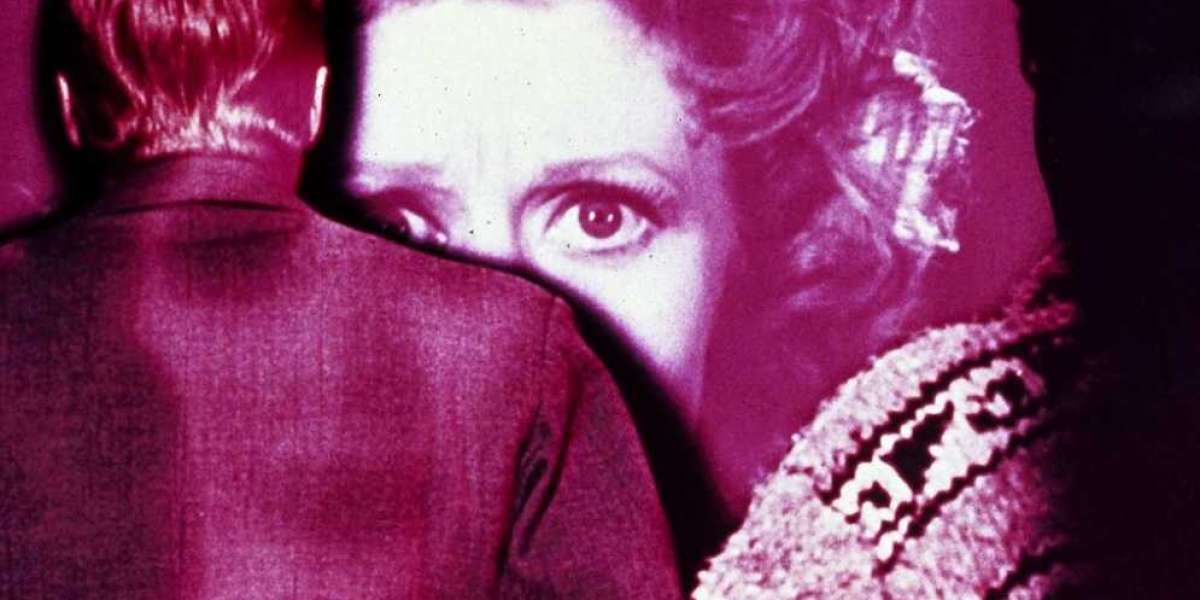British director Michael Powell's daring 1960 horror Peeping Tom disgusted critics and all but ended his career when it was released. However it is often cited with bringing together for the first time the elements of the all-American "slasher" movie, writes Brogan Morris.
The setting is unremarkable, most often an unassuming American suburbia. The villain is a blade-wielding, unapologetic killer, warped by past trauma into luring strangers to their (preferably bloody) deaths. The protagonists, typically young and horny, are all at risk, except perhaps for one: a "final girl" who may be resilient and morally pure enough to survive.
Even only casual viewers of horror will recognise this as the common outline of a slasher movie. Cemented in hit "Golden Age" slashers like Halloween (1978), Friday the 13th (1980) and A Nightmare on Elm Street (1984) (not to mention the many sequels to and imitators of each), the tropes of the slasher subgenre have been laid bare and then parodied and deconstructed in horror movies ever since Wes Craven's Scream (1996) kicked off its own self-aware slasher genre.
Those tropes that are now so familiar, however, have their origins in a film made almost two decades before the so-called Golden Age of the slasher began – and by a Brit, no less. But though hailed today as one of cinema's best and most groundbreaking horrors, Peeping Tom found no such adulation when it was released back in 1960.
The film's director, Michael Powell, had recently parted ways with his creative partner of nearly two decades, screenwriter Emeric Pressburger, with whom he had made some of Britain's most spellbinding pictures, among them The Life and Death of Colonel Blimp (1943), A Matter of Life and Death (1946) and Black Narcissus (1947) – humanistic, romantic, fantastical works that tested cinema's then-limits in photography and optical effects. For Peeping Tom, Powell had a new partner-in-crime, World War Two codebreaker-turned-screenwriter Leo Marks, and together they had in mind a different kind of innovation.
By the late 1950s, the relaxation of film censorship, society's evolving relationship with the taboo and cinema's competition with the increasingly popular medium of television were changing films, in Hollywood and the UK. Dr Matthew Asprey Gear, tutor at the Edinburgh College of Art, tells BBC Culture that films at this time would become "more lurid and titillating and dwell in the murk a little bit, to pull the audience in". This meant more sex and violence, says Gear; it also meant less moral certainty when it came to depictions of crime. "Noir in the 50s suddenly becomes a lot more brutal and more willing to follow protagonists who are pretty loathsome... Even if they do get their comeuppance, the focus on their immorality feels like something new," he says.
Peeping Tom would be an exploration of just where this new cinema – and its audience – could go. In a grubby London that's more post-war than Swinging Sixties, aspiring director Mark Lewis (Carl Boehm) works both as a focus puller at a film studio and as a photographer of pornography. His real passion, though, is seeking out women – sex workers, actresses, pin-up girls – to be subjects of a documentary with a novel concept: a bayonet attached to his camera, Mark films the women in their final moments, capturing their horrified expressions as he murders them.
Peeping Tom wasn't the first film to deploy what would later become tropes of the slasher genre. Hallam cites early examples including sorority horror Thirteen Women (1932), with its all-female series of victims ultimately dwindling to one final girl; The Leopard Man (1943), with its sustained stalking sequences and very human monster; and The Spiral Staircase (1946), with its own brief killer's POV shots. It was Powell's film, however, that would synthesise all the key slasher elements for the first time.
A personal film
Apparently, Powell arrived at such a film with no real familiarity with or fondness for scary movies. He didn't think of Peeping Tom as horror, preferring to call it a "film about Freud". Thelma Schoonmaker, who was married to Powell from 1984 until his death in 1990 (they were introduced by Scorsese), said in a recent interview for podcast The Evolution of Horror that her late husband wouldn't even approve of Peeping Tom's legacy among horror aficionados today: "While people say it kicked off the slasher film... I don't think Michael would be happy about that."
The film was, perhaps oddly, a personal work for its director. Powell, who plays Mark's tormentor father in Peeping Tom's sinister home movie footage and cast his son in the role of Mark as a child, later said that he "felt very close to" Mark. Having emerged from an aborted film about psychoanalysis that Powell and Marks had been working on, during the writing of which Marks was able to "study" the director, Peeping Tom would offer a glimpse into the mind of Powell himself.
Despite his reputation as a director of cosy films, Powell had a darker streak. (In James Howard’s 1996 book on Powell, Maxine Audley, who plays Helen's blind mother in Peeping Tom, describes once witnessing the director place an actor on a perch 30 feet high knowing that the actor both had vertigo and urgently needed the job to pay rent.) In Peeping Tom, Powell – who once told an interviewer: "I don't think there is anything more frightening than a camera" – turns the camera into an instrument of torture not just for Mark's victims but for the viewer, who in true slasher fashion is subjected to close-up murder scenes while made to feel vaguely like an accomplice, through witnessing events with the killer's POV.
Though no less than Scream's postmodern killer Ghostface credits Peeping Tom with birthing the slasher, the self-reflective nature of Powell's film also made it first in another way: "All the meta-slashers, like Scream... Peeping Tom was doing that in 1960," Hallam says. Watch Peeping Tom today and it does play almost like a knowing satire of the subgenre it invented: our killer-cum-director character, a film obsessive with a "morbid urge to gaze", who habitually seeks out sex and violence with his camera, exists in a world in which women are merely either objects of desire or screaming damsels in need of saving. Much as Wes Craven would with Scream 36 years after Peeping Tom, Powell with his film "[gets] us to think about the whole idea of why we watch, how we're watching, what we're getting from watching these things," says Hallam.
Michael Powell was always out of step with the cinema of his own country, and often ahead of his time. He was, in his words, "too exotic" for Britain, even going back to those intensely emotional films he made in the 40s and 50s with Pressburger, films that would only be canonised as classics after they were championed by New Hollywood filmmakers including Scorsese and Francis Ford Coppola. Dismissed at home, Peeping Tom would likewise be resurrected by US filmmakers years later and have its influence on an enduringly popular type of Hollywood movie, one of summer camps, sinful teens and middle-American suburbs – a British film that became the urtext for a very American subgenre.
The Creative Worlds of Powell and Pressburger is at the BFI Southbank until 31 December.








